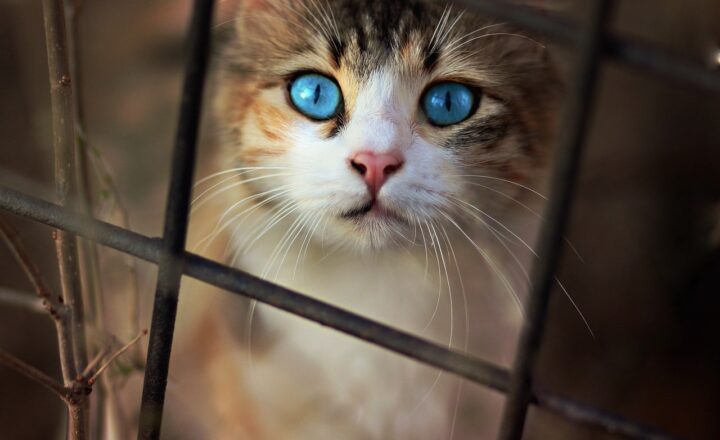Cartoons vs. Reality: Are Animated Characters Even Close to the Truth?
November 19, 2024

Cartoons have been a popular form of entertainment for generations, captivating audiences with their vibrant colors, zany humor, and larger-than-life characters. From iconic figures like Mickey Mouse and Bugs Bunny to modern favorites like the characters from “Adventure Time” and “Rick and Morty”, animated characters often portray exaggerated versions of real human experiences. But do these colorful creations bear any resemblance to the reality we live in? In this article, we will explore the relationship between cartoons and the world we inhabit, delving into the impact they have on culture, perceptions, and social norms.
1. The Origins of Animated Characters
Before we can analyze how cartoons relate to reality, it’s crucial to understand their origins. The first animated characters date back to the early 20th century, with hand-drawn animations created by pioneers like Winsor McCay. These initial animations often reflected societal norms, expectations, and humor of the time. Notable works such as “Gertie the Dinosaur” (1914) paved the way for future animators, introducing audiences to the idea of anthropomorphizing animals and inanimate objects.
As animation techniques evolved, characters became more sophisticated. The advent of color, synchronized sound, and eventually digital animation allowed creators to construct intricate worlds where anything was possible. Despite the artistic license taken in these portrayals, many foundational characteristics can be traced back to human experiences and cultural narratives.
2. The Exaggeration of Reality
A defining feature of cartoons is their ability to exaggerate reality. Animated characters are often portrayed with exaggerated physical features, personalities, and behaviors. Take, for instance, the classic character of Wile E. Coyote, who uses an array of outlandish gadgets to try to catch the Road Runner. In reality, there are numerous limitations and laws of physics that would prevent such antics from ever succeeding.
This exaggeration serves several purposes:
- Humor: The absurdity of extreme situations often leads to comedic moments. Cartoon characters face giant anvils, explosive traps, and impossible challenges, all while maintaining a light-hearted tone that resonates with audiences.
- Escapism: Viewers can escape their daily lives and immerse themselves in a world where the improbable becomes probable. This relief from reality can be a source of comfort and joy.
- Social Commentary: Many cartoons use their exaggerated characters and storylines to comment on societal issues. For example, “The Simpsons” has often tackled topics like politics, consumerism, and family dynamics in a satirical manner while using extremely exaggerated character traits.
3. The Influence on Perception and Behavior
The impact of cartoons extends beyond mere entertainment; it shapes how audiences perceive reality. Characters often embody idealized traits such as courage, friendship, and resilience. As children consume these narratives, they internalize these traits and may attempt to emulate their favorite characters in their real lives.
However, this can also lead to misconceptions:
- Unrealistic Expectations: Viewers, especially children, may develop skewed perceptions of reality. For instance, the idea that anyone can overcome mountains of adversity through sheer willpower alone can diminish the understanding that life is often complicated and requires substantial effort and many setbacks.
- Normalization of Violence: In several cartoons, characters often face violence with little to no consequences. This portrayal can influence young viewers’ perceptions of aggression and conflict resolution in real life.
- Stereotyping: Many animated shows reinforce stereotypes about gender, race, and social roles. For example, female characters are frequently depicted in stereotypical, often passive roles, which can shape societal perceptions and expectations.
4. When Cartoons Reflect Reality
Amidst the exaggerations, it’s interesting to note how cartoons can also reflect reality. Some animated series tackle sensitive subjects and pay homage to real-world issues, serving as a bridge between entertainment and awareness:
- Social Issues: Shows like “Futurama” and “Rick and Morty” often employ science fiction and satire to address contemporary issues such as climate change, consumer culture, and existential crises.
- Cultural Norms: Animated series like “Avatar: The Last Airbender” go beyond mere fantasy. They incorporate themes of honor, friendship, and cultural significance that viewers can resonate with on a deeper level.
- Character Development: Many modern shows prioritize complex characters over one-dimensional personalities. This mirrors real human experiences, showcasing vulnerability, growth, and the journey towards understanding oneself.
5. The Evolution of Cartoons and Their Relevance Today
As society evolves, so do animated characters and stories. Today, there is a conscious effort in animation to produce content that reflects diversity, inclusivity, and real-life struggles. This evolution is evident in shows such as “Steven Universe,” which addresses themes of identity, relationships, and acceptance.
Animated characters are sometimes ridiculously ungrounded in reality, but their ability to adapt and reflect cultural changes showcases the power of animation as a medium. In a world filled with complex societal issues, cartoons have the unique ability to spark conversation and engage audiences on topics that matter, bridging the gap between absurd entertainment and meaningful discussions.
6. Conclusion: The Fine Line Between Animation and Reality
In conclusion, animated characters serve a purpose that goes beyond mere entertainment. They entertain us, challenge societal norms, and provide an avenue for exploring the complexities of human nature — albeit in a highly exaggerated fashion. While cartoons may not always reflect reality accurately, they help us understand and navigate the world we live in. The best animated series manage to strike a balance, offering both laughter and valuable lessons.
At the end of the day, the line between cartoons and reality is not as clear-cut as it seems. By acknowledging how animated characters shape our perceptions, we can encourage critical thinking about media consumption. So, next time you laugh at a quirky cartoon, take a moment to consider: are those characters encouraging valuable lessons, or are they merely taking us on a wild ride of absurdity?








